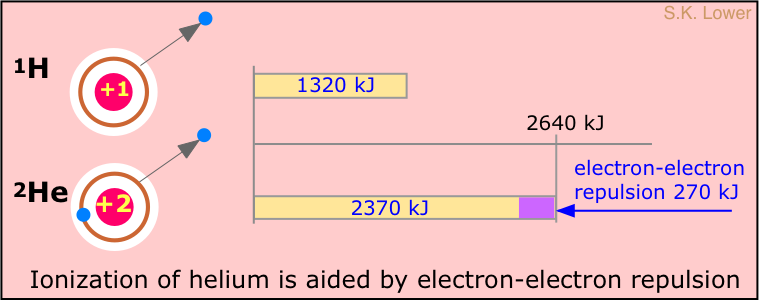Watch the following videos to get an idea of how the technique works and what the graphical results look like. Then notice how we can use these graphs to get information about the electron configuration and identities of atoms.
- This second video has a worksheet that goes along with it that you will be asked to complete while watching the video.
- Lastly, read the diagram and text below AND the webpage shown in this link to help you understand what is going on with electrons in 3d and 4s, which orbtial they ACTUALLY fill in first, why they do it in that order, and why we learn electron configurations in the other order.
Electron-electron repulsion

It takes 1312 kJ of energy to remove the electron from a mole of hydrogen atoms. What might we expect this value to be for helium? Helium contains two electrons, but its nucleus contains two protons; each electron "sees" both protons, so we might expect that the electrons of helium would be bound twice as strongly as the electron of hydrogen. The ionization energy of helium should therefore be twice 1312 kJ/mol, or 2612 kJ/mol.
However, if one looks at the spectrum of helium, the continuum is seen to begin at a wavelength corresponding to an ionization energy of 2372 kJ/mol, or about 90% of the predicted value.
Why are the electrons in helium bound less tightly than the +2 nuclear charge would lead us to expect?
The answer is that there is another effect to consider: the repulsion between the two electrons; the resulting electron-electron repulsion subtracts from the force holding the electron to the nucleus, reducing the local binding of each.
Electron-electron repulsion is a major factor in both the spectra and chemical behavior of the elements heavier than hydrogen.
No comments:
Post a Comment
Note: Only a member of this blog may post a comment.